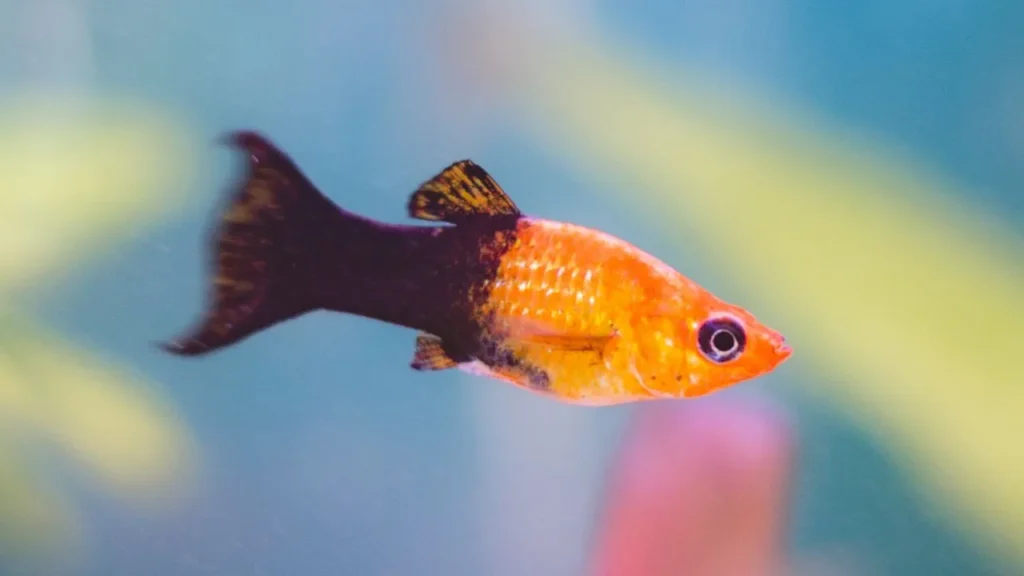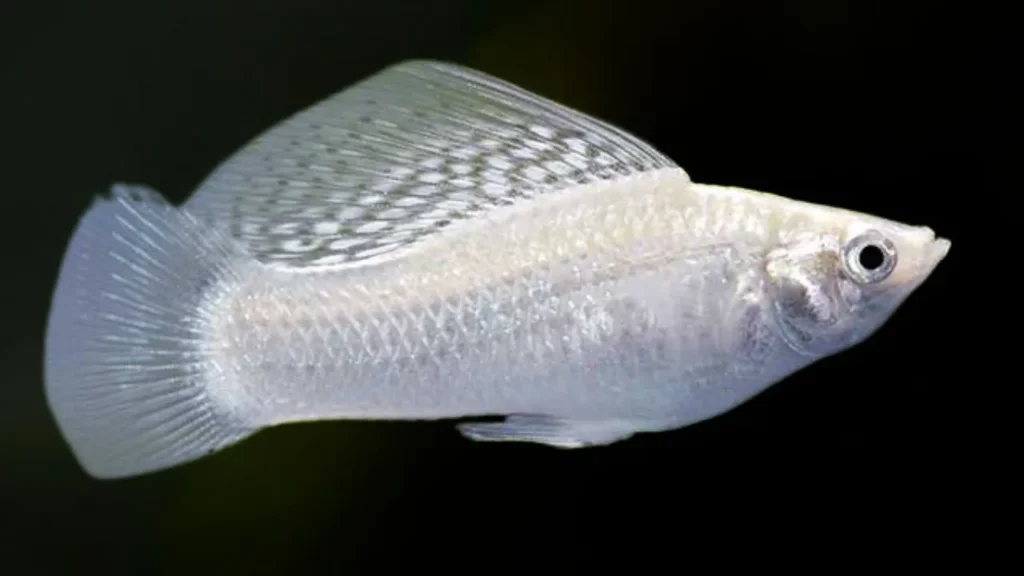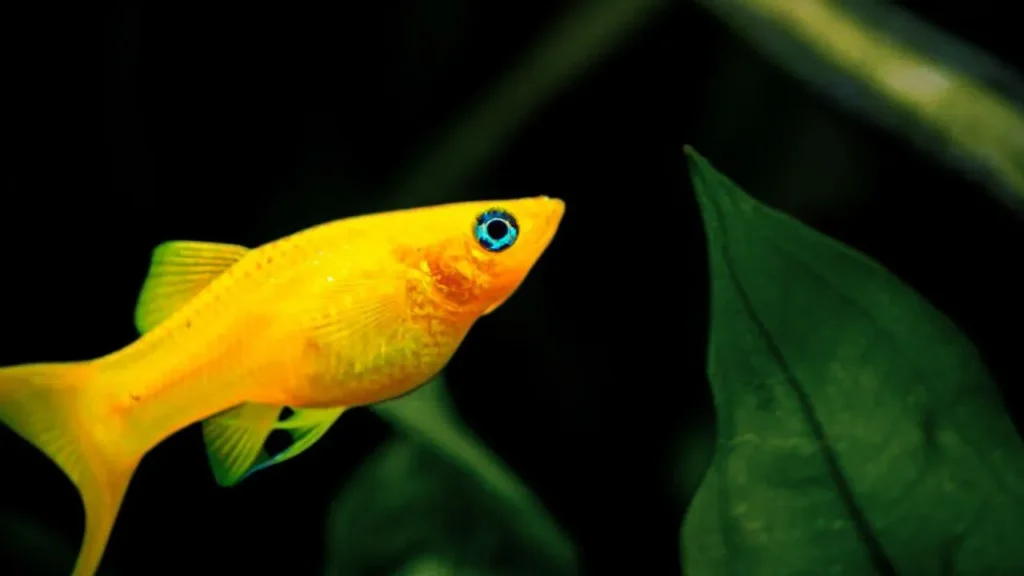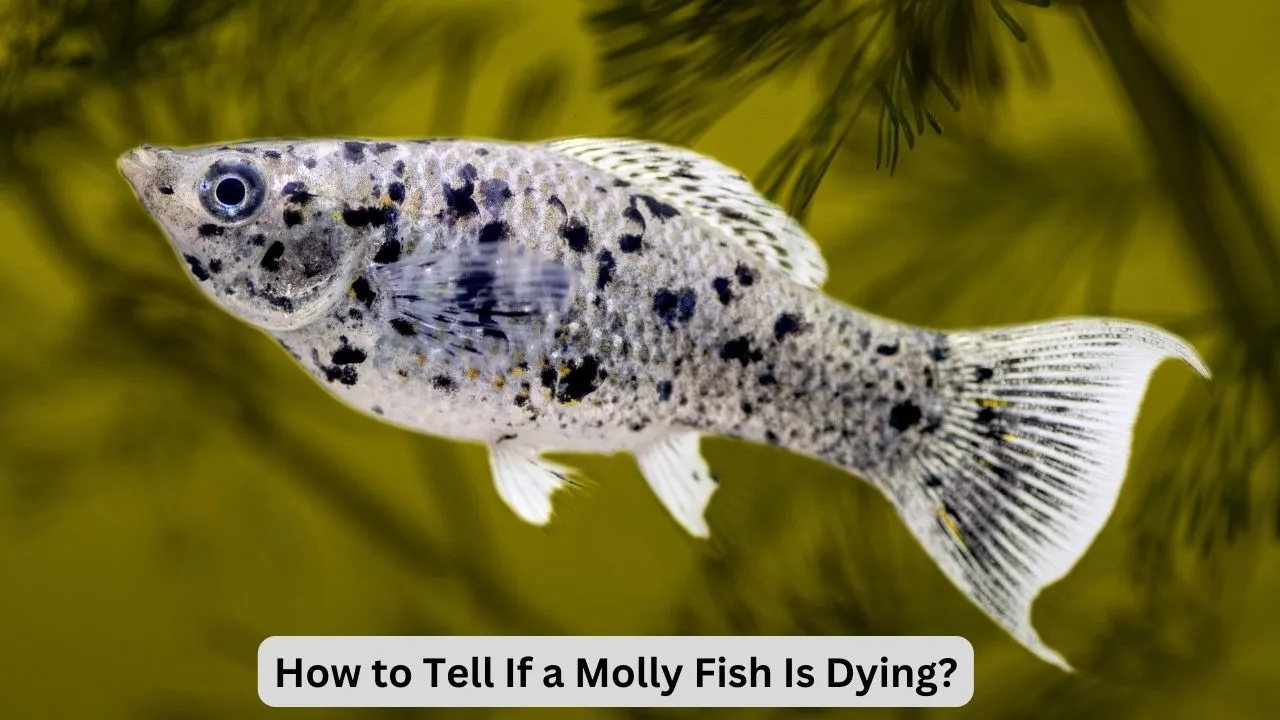Knowing how to tell if a molly fish is dying is crucial for any aquarium owner. Spotting the early signs of disease allows you to isolate sick fish, diagnose the illness, and provide prompt treatment to save your beloved molly.
Molly fish (Poecilia sphenops) are a popular freshwater species loved by aquarium hobbyists for their peaceful nature, vibrant colors, and ease of care. However, like any living creature, mollies can become ill and show signs of disease. Catching the symptoms of a sick molly early is key to saving your fish and providing proper treatment.
Read on to learn the 7 major signs or molly fish dying symptoms, common diseases to watch for, and tips to help nurse your fish back to health.
How To Tell If A Molly Fish Is Dying? Molly Fish Dying Symptoms.
Learning the molly fish dying symptoms or signs of a stressed, sick molly fish can help you intervene in time to save your dying molly fish’s life. Here are 7 common molly fish dying symptoms that indicate your molly may be severely ill:

1. Loss Of Appetite
One of the first signs of how to tell if a molly fish is dying is a loss of appetite. Healthy mollies are voracious eaters and excited for feeding time. A disinterest in food, even their favorite treats, signals that something is wrong.
Your molly may still eat a little, but a noticeable decrease in appetite or no interest at all could mean they are stressed, aging, or succumbing to disease. Lack of eating leads to malnutrition and weakness.
2. Lethargic Behavior
Another common molly fish dying symptoms is lethargic behavior of the fish. Mollies are active fish, constantly exploring their environment. A healthy molly energetically swims around the tank and interacts with tankmates.
If your fish hangs out in one spot for long periods, moves sluggishly, or seems to have trouble swimming, it likely feels ill. Inactivity is a major red flag for disease.
3. Clamped Fins
Mollies normally hold their dorsal, tail, and pectoral fins spread open. Clamped, folded, or tightly pressed fins signal that a fish feels threatened or is ill.
Stressed fish clamp fins against their body for protection. Sick fish may also clamp fins as a response to discomfort or disease. Watch for this warning sign.
4. Discoloration
While color changes can indicate stress, a loss of vibrancy or fading is most concerning. The striking colors of mollies quickly fade or turn pale when sick.
Gradual fading or a sudden loss of color, especially in conjunction with other symptoms, are signs of deteriorating health. Keep an eye out for any drastic changes.
5. Gasping At The Surface
Mollies gulp air from above to supplement their oxygen intake. However, a fish gasping near the surface likely suffers from oxygen deprivation or respiratory distress.
Rapid gill movement while gasping indicates labored breathing and is cause for alarm. Immediately check water parameters like temperature, ammonia levels, and dissolved oxygen.
6. White Spots On Skin Or Fins
Small white dots on a molly’s body, tail, or fins point to a likely case of Ich, a common parasitic disease. Also called white spot disease, Ich is easily treated if caught early.
However, the parasite quickly spreads from fish to fish. Separate infected mollies immediately to contain the outbreak.
7. Bulging Eyes
Abnormal eye protrusion or swelling signals the bacterial infection called Popeye Disease. If your molly’s eyes seem enlarged, hazy, or bulge out of sockets, Popeye is likely the culprit.
Unfortunately, molly fish eyes may ultimately pop out as the condition worsens. Popeye requires antibiotic medication, so see a veterinarian.
You May Like: Pregnant Molly Fish.
Why Do My Molly Fish Keep Dying?
Now that you have know how to tell if a molly fish is dying, another common question arise is why do your molly fish keep dying?
If you notice multiple mollies dying off, investigate the root cause and correct any husbandry issues to protect remaining fish. Here are common reasons for why do molly fish keep dying:

Improper Tank Cycling
Skipping the nitrogen cycle when setting up a new tank could be a reason of your molly fish keep dying. Beneficial bacteria hasn’t built up yet to process ammonia and nitrites that quickly accumulate to toxic levels.
Be patient and properly cycle your aquarium before adding any fish. Add hardy species first to keep bioload manageable.
Poor Water Quality
Pollutants like ammonia and nitrates rise to dangerous levels without sufficient tank maintenance. Test water parameters frequently to catch problems early.
Perform partial water changes at least weekly, more often in undersized tanks. Only use dechlorinator-treated water that matches the temperature and pH of the tank.
Overcrowding
Aggressive tankmates bully mollies, while overstocked tanks cause fatal ammonia spikes from accumulated fish waste. Avoid overcrowding and remove aggressive fish.
As a rule of thumb, allow at least 2 gallons of water per inch of molly. Reduce bioload by rehoming fish or upgrading tank size if needed.
Improper Acclimation
When introducing new mollies to your tank, failing to properly acclimate them can cause fatal shock. Float bags to equalize temperatures, then add a little tank water every 20 mins to acclimate.
A 60-90 minute drip acclimation allows molly fish to adjust to new water parameters. Rushing this step risks health complications.
Untreated Diseases & Parasites
Contagious freshwater diseases spread quickly in tanks if left untreated. Isolate and treat any sick fish immediately to prevent transmission.
Quarantine new fish for at least 2 weeks to avoid introducing pathogens. Provide optimal water quality and varied diet to boost immunity.
Environmental Stressors
Sudden water chemistry changes, inappropriate temperatures, harassment from tankmates, or high nitrate levels can stress mollies. Chronic stress leads to disease susceptibility and death.
Perform routine testing, maintenance, and tank observations to catch issues early. Maintain water parameters and tank decor to reduce stress.
Molly Fish Diseases: 6 Illnesses To Watch For
While molly fish are generally hardy, they are still susceptible to several common freshwater diseases if water quality declines or their immune system weakens. Stay vigilant for these 6 common illnesses:
1. Ich (White Spot Disease)
Caused by the protozoan parasite Ichthyophthirius multifiliis, ich manifests as small white dots resembling salt grains on fins and body. Other signs include flashing, lethargy, labored breathing, and loss of appetite.
Treat with anti-parasitic medications or gradually raising tank temperature to 86°F. Remove carbon filters during treatment, as they remove medications.
2. Fin Rot
Fin rot results from bacterial or fungal infection, causing fraying fins that progressively rot away. Signs include torn, bloody, or black-edged fins. Treat with antibiotics for bacterial infections or antifungal baths. Improve water quality.
3. Popeye
Ocular bacterial infections lead to swollen, bulging eyes (one or both). Fish may exhibit cloudy eyes, reddened areas around eyes, or a protruding eyeball. Treat with antibiotics early before permanent eye damage occurs.
4. Dropsy
A symptom of organ failure, dropsy causes bloating, protruding scales, and bloody ulcers on body and fins. Treat underlying cause and improve water quality immediately, though it’s often difficult to cure.
5. Velvet Disease
Pseudoloma neurophilia parasites coat fish in a yellowish or rust-colored “velvet” sheen on skin and fins. The colored powder easily rubs off. Other signs include labored breathing and lethargy. Treat with anti-parasitic medications.
6. Fish Tuberculosis (Mycobacteriosis)
A chronic bacterial disease leading to emaciation, skin ulcers, fin/scale loss, spinal deformities, and death if left untreated. No known cure exists – euthanize seriously infected fish to prevent transmission.
Also Read: Pregnant Black Molly Fish Care.
How To Save A Dying Molly Fish In 4 Steps
Despite all the possible precautions sometime mollies get sick. So in this situation how to save a dying molly fish?
If you spot signs of disease early, you may be able to provide care and treatment to nurse your molly back to health. Follow these steps to save your dying molly fish:

1. Isolate The Sick Fish
Move the infected molly into a quarantine tank to prevent disease transmission. Provide optimal water quality and care. Watch if symptoms improve or worsen over the next days.
2. Diagnose The Disease
Research to identify the specific illness based on symptoms and appearance. Knowing the disease allows proper medication and care for a dying molly fish. Consult an experienced aquarist or vet for help diagnosing.
3. Medicate Appropriately
Once diagnosed, research recommended medications and dosages for the disease. Follow treatment plans, removing carbon filters that remove medicine. Covering tanks can help block out light during recovery.
4. Improve Tank Conditions
Prevent future outbreaks by identifying and correcting the root cause, whether overcrowding, poor maintenance, or other issues. Maintain high water quality and reduce stressors to support healing.
While not every sick fish can be cured, isolating, diagnosing, and treating illness early provides the best chance of recovery for a dying molly fish. Don’t give up too soon!
How Do I Know If My Molly Is Stressed?
Since stress dramatically reduces disease resistance, recognizing signs of stress allows you to minimize triggers. Watch for these 7 signs of a stressed molly fish:
- Changes in behavior like increased hiding, aggression, bottom-sitting, or erratic swimming
- Loss of color/pale appearance
- Clamped fins held tightly to body
- Increased respiration rate or gasping at surface
- Reduced appetite and failure to thrive
- Flicking or rubbing against objects
- Jumping out of water
Evaluate tank conditions and perform maintenance to reduce disturbances and optimize water parameters. Add more plants and hides for security, or use tank dividers to reduce aggressive fish interactions. Stress weakens the immune system and leads to disease susceptibility.
You May Like: Why Are Medaka Rice fish So Popular?
Conclusion.
In conclusion to “how to tell if a molly fish is dying”, By recognizing the major signs of disease, from loss of appetite and lethargy to skin parasites and bulging eyes, you can respond quickly at the first symptoms of illness in your molly fish. Isolate sick fish immediately, diagnose the specific disease through research, and use appropriate medications to give your fish its best chance.
Prevent future outbreaks by identifying and correcting any husbandry issues or tank problems contributing to disease. Maintain high water quality, reduce stress, and feed a nutritious diet to keep your mollies happy and healthy for years to come!
FAQs.
What are the most common illnesses in mollies?
The most frequent molly fish diseases are ich (white spot disease), fin rot, popeye, dropsy, velvet disease, and fish tuberculosis. Provide clean water and ideal tank conditions to prevent outbreaks.
How can I tell if my molly is dying of old age?
Mollies dying of old age may exhibit fading colors, frayed fins, cloudy eyes, sluggish swimming, and a lack of interest in food or tankmates. Age-related deterioration is gradual. Ensure water quality is pristine to support elderly fish.
Why did my molly die suddenly with no signs of illness?
Sudden unexplained death with no previous symptoms often results from water chemistry imbalances like spikes in ammonia or nitrites. Test water frequently and perform water changes to prevent toxicity.
Can mollies recover from Popeye disease?
If treated early, mild Popeye infections can be cured in mollies with antibiotic medications. However, delaying treatment may allow permanent eye damage. Isolate sick fish promptly to contain the outbreak.
How long does it take for Velvet Disease to kill a molly?
Left untreated, Velvet Disease is usually fatal to mollies within 7-14 days as the parasite overwhelms the fish’s system. Treat immediately with anti-parasitic medication to improve chances of survival.
Why did all my mollies die except one?
Mass deaths leaving one survivor likely indicate a water quality issue like a toxic ammonia spike. The lone fish may have greater resistance. Review tank maintenance procedures to prevent future casualties.

